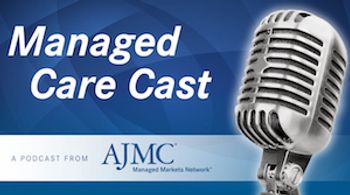
Patients with comorbid depression and chronic obstructive pulmonary disease (COPD) have low rates of adherence to their COPD management medications, putting them at increased risk of emergency department visits and hospitalizations.

Patients with comorbid depression and chronic obstructive pulmonary disease (COPD) have low rates of adherence to their COPD management medications, putting them at increased risk of emergency department visits and hospitalizations.

Every week, The American Journal of Managed Care® recaps the top managed care news of the week, and you can now listen to it on our podcast, Managed Care Cast.

This week, the top managed care stories include an announcement that CMS will take Social Security numbers off Medicare cards; a national plan to combat chronic obstructive pulmonary disease was released; and a nutrition advocacy group calls on FDA to stick with the schedule for a new nutrition facts label.

The National Heart, Lung, and Blood Institute has released the first-ever COPD National Action Plan, which is aimed at ending the illness.

A JAMA study has found that patients with chronic obstructive pulmonary disease (COPD) who received noninvasive ventilation in addition to home oxygen therapy went longer without being readmitted to the hospital or dying than those who received only home oxygen therapy.

A panel at the Pharmacy Quality Alliance talks about how to take patient input and turn it into meaningful measurement.

An analysis of discontinuation in randomized controlled trials for chronic obstructive pulmonary disease (COPD) has determined the main factors causing patients to drop out of clinical trials. The results were published in the International Journal of COPD.


Getting smokers to quit smoking sometimes requires medical intervention, such as varenicline and bupropion; however, there have been concerns about the safety of these smoking cessation treatments in smokers with chronic obstructive pulmonary disease.

Short-term use of high-flow nasal tubes can help patients experiencing exacerbations of their chronic obstructive pulmonary disease, according to a study in Respirology.

A study in Journal of Medical Internet Research sought to discover how technologies could encourage daily walking in this population. The researchers developed 3 prototype apps using different persuasive technology design principles: dialogue support, primary task support, and social support.

In primary care, nurse practitioners and physician assistants do not necessarily order more ancillary services, or more costly services among alternatives, than physicians.

High-cost patients are only modestly concentrated in specific hospitals and healthcare markets.

The European Respiratory Society and the American Thoracic Society have conducted a comprehensive review of evidence of managing exacerbations of chronic obstructive pulmonary disease in order to create a guideline of clinical recommendations.

A new collaboration between the Duke Clinical Research Institute, Duke University’s MURDOCK Study, and Boehringer Ingelheim Pharmaceuticals Inc will try to better understand how chronic obstructive pulmonary disease progresses in the real world.

Patients with chronic obstructive pulmonary disease see benefits from physical activity (PA); however, there are several barriers that limit participation in PA in a primary care setting.

Palliative care can help alleviate the suffering and symptoms that go along with serious disease, making it an important component when caring for complex, high-need patients, said Allison Silvers, vice president of payment and policy at the Center to Advance Palliative Care.

The majority of costs associated with chronic obstructive pulmonary disease (COPD) are associated with hospitalizations, and a new study in the International Journal of COPD set out to determine the exact drivers of high costs among hospitalized patients with COPD.

Using patient-reported outcomes and data on healthcare utilization, researchers from the Yale School of Medicine have been able to compare the health burden of asthma—COPD overlap syndrome with asthma or chronic obstructive pulmonary disease (COPD) alone.


For patients with chronic obstructive pulmonary disease (COPD), catching a cold is often more than just an annoyance; their risk of experiencing COPD symptom exacerbation rises 30-fold when they exhibit signs of a cold.

Home health beneficiaries with diabetes using paid supplementary caregivers had 68% higher hazards of readmission due to urinary tract infection than those with unpaid supplementary caregivers.

Patients receiving postdischarge care from pharmacists had a 28% lower risk of readmission at 30 days and a 31.9% lower risk at 180 days compared with usual care.

Patients with chronic obstructive pulmonary disease have a higher risk of falls, which a new study suggests could be explained by their altered walking patterns compared with healthy controls.

Except in cases of critical illness, the intensive care unit may not be the best place for patients experiencing a flare-up of heart failure or their chronic obstructive pulmonary disease or even having a heart attack.

259 Prospect Plains Rd, Bldg H
Cranbury, NJ 08512
© 2025 MJH Life Sciences®
All rights reserved.
